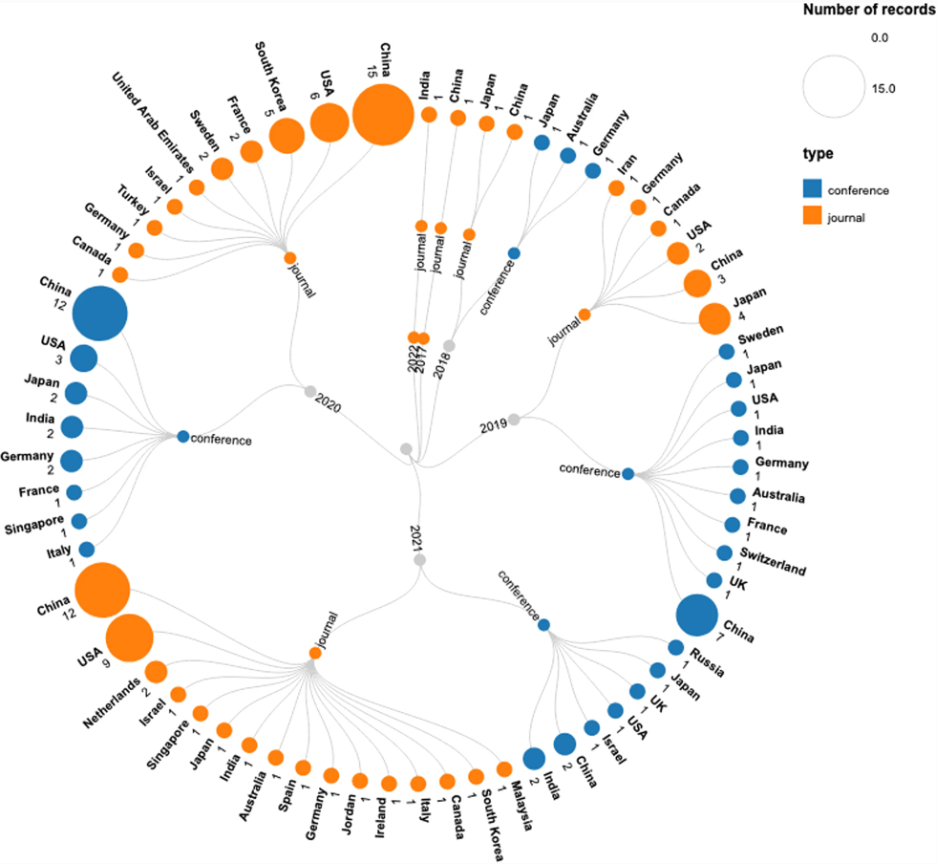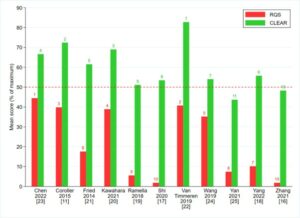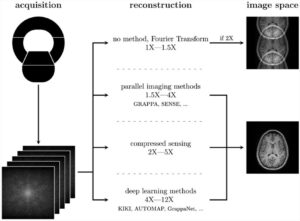Magnetic Resonance Imaging (MRI) is a widely used medical imaging technology that is non-intrusive and considered safe for humans and can generate different modalities of an image, as well as provide valuable insights into a specific disease. The frequent sequences of MRI are T1-weighted and T2- weighted scans. The popularity of artificial intelligence (AI) for brain MRI is on the rise with many recent developments published in the literature. Typically, the performance of AI for brain MRI can improve if enough data is made available. Generative Adversarial Networks (GANs) showed great potential in generating synthetic MRI data that can capture the distribution of real MRI. Furthermore, GANs are also popular for segmentation, noise removal, and super-resolution of brain MRI images.
This review explores how GANs methods have been used on brain MRI data, as reported in the literature. The review describes the different applications of GANs for brain MRI, presents the most commonly used GANs architectures, and summarizes the publicly available brain MRI datasets for advancing research and development of GANs-based approaches; The review includes 139 published studies. A careful analysis of the studies reveals that the most common use case of GANs is the synthesis of brain MRI images for data augmentation. GANs have also been used to segment brain tumors and translate healthy images to diseased images or CT to MRI and vice-versa. The included studies showed that GANs could enhance the performance of AI methods used on brain MRI imaging data. However, more efforts are needed to transform the GANs-based methods in clinical applications.
The following research questions related to the role of the GANs-based method in brain MRI were considered for this review:
1. What were the typical applications of GANs proposed for brain MRI?
2. Which architectures of GANs are most commonly applied for brain MRI?
3. What was the purpose of using GAN in brain MRI?
4. What were the most commonly used datasets for brain MRI?
5. How many datasets were publicly accessible?
6. What evaluation matrices were used for the validation of the model?
We believe that this study will be helpful for researchers and professionals in the medical imaging and healthcare domain who are considering using GANs methods for the diagnosis and prognosis of brain tumors from MRI images. The review also lists publicly available brain MRI datasets that will be helpful for AI researchers to develop advanced research methods.
Key points
- This article aims to provide a comprehensive review on the applications of generative adversarial networks (GANs) in brain MRI.
- The specific focus of this education review is on brain MRI.
- It covers a large number of studies on GANs in brain MRI and the most recently published studies on brain MRI.
Article: The role of generative adversarial networks in brain MRI: a scoping review
Authors: Hazrat Ali, Md. Rafiul Biswas, Farida Mohsin, Uzair Shah, Asma Alamgir, Osama Mousa & Zubair Shah













